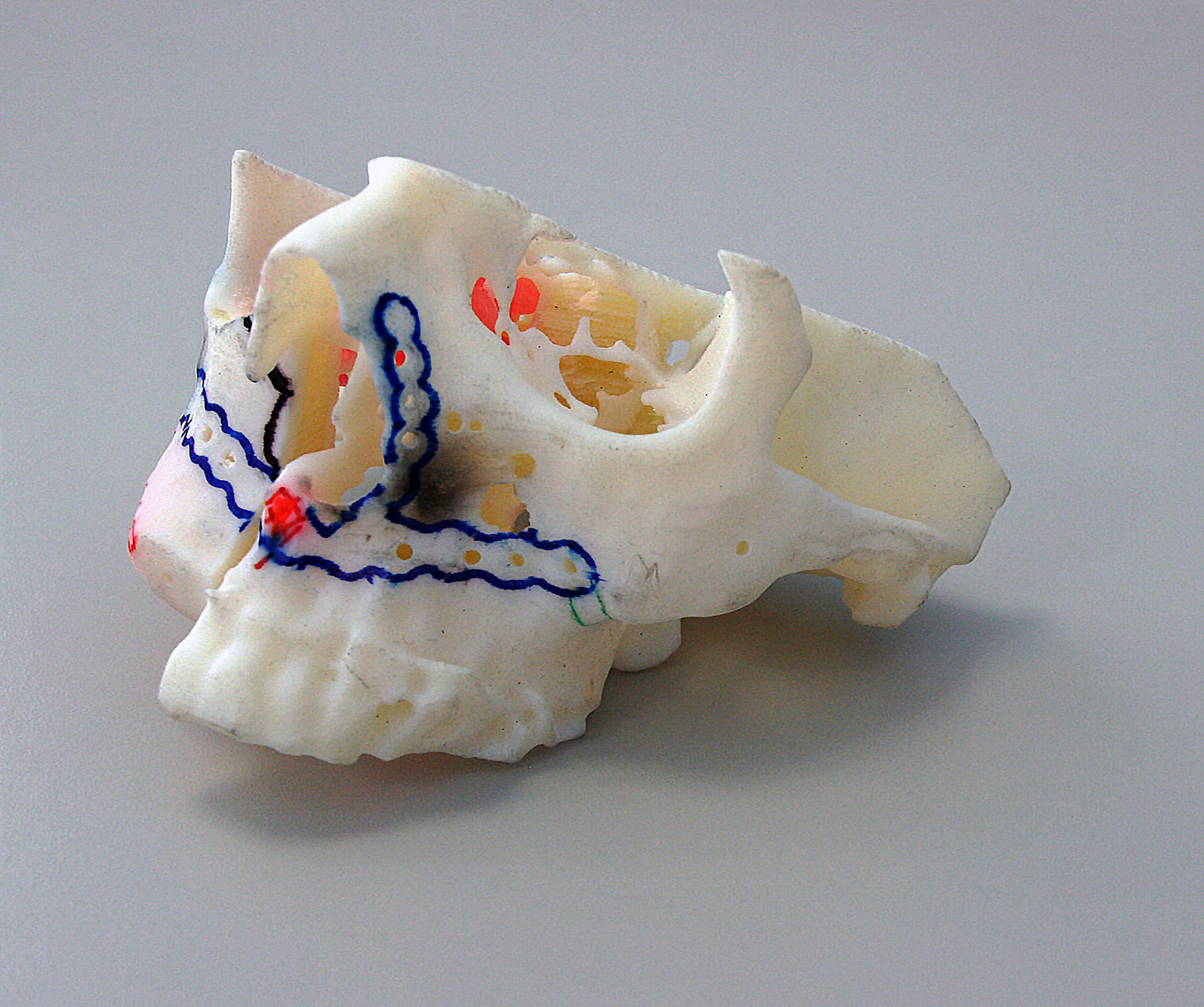- In-house 3D printing capabilities enable time saving of 93% in surgical planning time and time savings of three to four hours in OR time
- Stratasys PolyJet 3D printing used to construct advanced maxillofacial cutting guides and anatomical models for patients with severe conditions, including facial and cranial tumours
3D printing technology is helping to improve life-changing maxillofacial surgeries at the Queen Elizabeth Hospital in Birmingham.
Stratasys’ Objet Eden350V 3D Printer has been deployed to produce customised models for pre-surgical preparations, enabling a reduction of up to 93% in surgical planning time associated with standard anatomical models.
Furthermore, the hospital reports that three to four hours are saved in surgical time per surgery, and costs are reduced of up to £20,000 per operation.
“In the current operating climate, physicians need solutions that can save time and money, while also improving quality of care p>
Having previously outsourced its 3D printing requirements, implementing an in-house 3D printer, with the help of Tri-Tech 3D, has revolutionised pre-surgical procedures across a number of departments.
This includes the maxillofacial (face and jaw); burns and plastics; ear, nose and throat; and neurosurgery units.
“The ability to produce life-like medical models in-house on our Stratasys 3D Printer saves around three to four hours in OR time per surgery, which at a cost of £5,000 an hour of operating room time, is quite a substantial cost saving”, said Stefan Edmondson, consultant maxillofacial prosthetist at the hospital.
Most of the patients currently benefiting from the hospital’s 3D printing capability are trauma and cancer patients, typically those with facial or cranial tumours.
Using Stratasys 3D printing, the maxillofacial prosthetic team converts patients’ CT scans into highly-accurate 3D printed replica models, bone replacement parts or metal prosthetic plates that are customised to the exact specification of each patient.
“If we need to remove bone from a patient’s face, we can produce an exact 3D printed model to develop the cutting guides”, said Edmondson.
“This process results in more-efficient clinical outcomes and saves the hospital, patient and medical practitioner valuable time and associated costs.”
It is a clear demonstration of the ability for 3D printing to enable physicians to better plan, practice and determine the optimal surgical approach
As well as facilitating the production of surgical cutting guides to speed up extremely-advanced procedures, Stratasys PolyJet 3D printing allows surgeons to practice surgeries on true-to-life 3D printed anatomical models. This provides invaluable insight into procedural outcomes and helps minimise risks.

The in-house Stratasys 3D Printer enables the creation of exact replicas of the patient’s anatomy and allows customised fittings and pre-bending of plates
The unique properties of Stratasys’ materials are also integral to the process, with the VeroWhite material providing a smooth, high-resolution finish ideal for accurate anatomical models. This provides an invaluable reference material throughout operations.
<’p> “When dealing with severe cases whereby surgical plates hold facial bones in place, we need absolute assurance that they fit the patients’ measurements exactly”, said Edmondson.“3D printing a replica of the patient’s anatomy allows us to pre-bend these plates in our laboratory. Having these capabilities at the hospital streamlines the entire operation and ensures we are 100% prepared when heading into surgery.”
“The advances Queen Elizabeth Hospital is making in the use of 3D printing in surgical planning are remarkable”, said Scott Rader, general manager of healthcare solutions at Stratasys.
“It is a clear demonstration of the ability for 3D printing to enable physicians to better plan, practice and determine the optimal surgical approach.
“In the current operating climate, physicians need solutions that can save time and money, while also improving quality of care.
“Queen Elizabeth’s implementation of 3D printing achieves these goals.”
